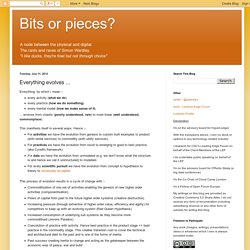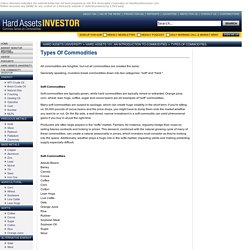

Everything evolves ... Everything, by which I mean :-every activity (what we do)every practice (how we do something)every mental model (how we make sense of it) ... evolves from chaotic (poorly understood, rare) to more linear (well understood, commonplace).

This manifests itself in several ways. Hence :- For activities we have the evolution from genesis to custom built examples to product (with rental services) to commodity (with utility services).For practices we have the evolution from novel to emerging to good to best practice (aka Cynefin framework)For data we have the evolution from unmodeled (e.g. we don't know what the structure is and hence we call it unstructured) to modelled.For every scientific pursuit we have the evolution from concept to hypothesis to theory to universally accepted. However, I've been asked a couple of times recently about chaotic to linear, so I thought I'd add a number of graphs which outline the changes and then summarise in the last two. On mapping and the evolution axis.
For a long time, I've been using maps of industries, businesses and systems to determine gameplay, management, learning of economic forces and how to manipulate markets.

The map has two axis - one of value chain (which represents a recursive set of needs from user needs to supplier needs) and the other of evolution. See figure 1. Figure 1 - a map of HS2 The first maps I produced were in 2005 and at that time whilst I suspected and had examples of a pattern for evolution (from the genesis of an act to commodity provision) , I actually had no way of describing why it occurred. At that time, I was familiar with concepts such as Everett Roger's diffusion curves (adoption over time) but they provided no consistent pattern for change - the diffusion curve of one instance of an activity is not the same as the diffusion curve of another if measured on identical axis.
Figure 2 - Different diffusion curves for maturing instances of the same activity Figure 3 - The Stacey Matrix Added 27th July 2014.
Simon Wardley. Wardley Maps - Home. Future *is* predictable · Penflip. Cloudology.png (PNG Image, 550 × 345 pixels) Untitled. Type the email address of the account you want to sign in with.

We're having trouble locating your account. Which type of account do you want to use? Sign in to Office 365 Which type of account do you want to sign in with? Make sure you typed the user ID assigned to you by your organization. Make sure you typed the user ID assigned to you by your organization. Make sure you typed your organization's domain name correctly. Make sure you typed your organization's domain name correctly.
Please enter your password. To sign in, start by entering a user ID. Check the email address you entered. Enter a different email address or get a new Microsoft account. Please try again in a few minutes. Please try again in a few minutes. Please try again in a few minutes. Please try again in a few minutes. Plus.google. What is my Strategy?
Visio Guy. Mapping in Visio. Types Of Commodities. All commodities are fungible, but not all commodities are created the same.

Generally speaking, investors break commodities down into two categories: "soft" and "hard. " Soft Commodities Soft commodities are typically grown, while hard commodities are typically mined or extracted. Orange juice, corn, wheat, lean hogs, coffee, sugar and cocoa beans are all examples of "soft" commodities. Many soft commodities are subject to spoilage, which can create huge volatility in the short term; if you're sitting on 30,000 pounds of cocoa beans and the price drops, you might have to dump them onto the market whether you want to or not. Producers are often large players in the "softs" market. Hard Commodities "Hard" commodities are typically mined from the ground or taken from other natural resources, e.g., gold, oil, aluminum. Because "hard" commodities are easier to handle than most "softs," and because they are more integrated into the industrial process, most investors focus on these products.
Bits or pieces?